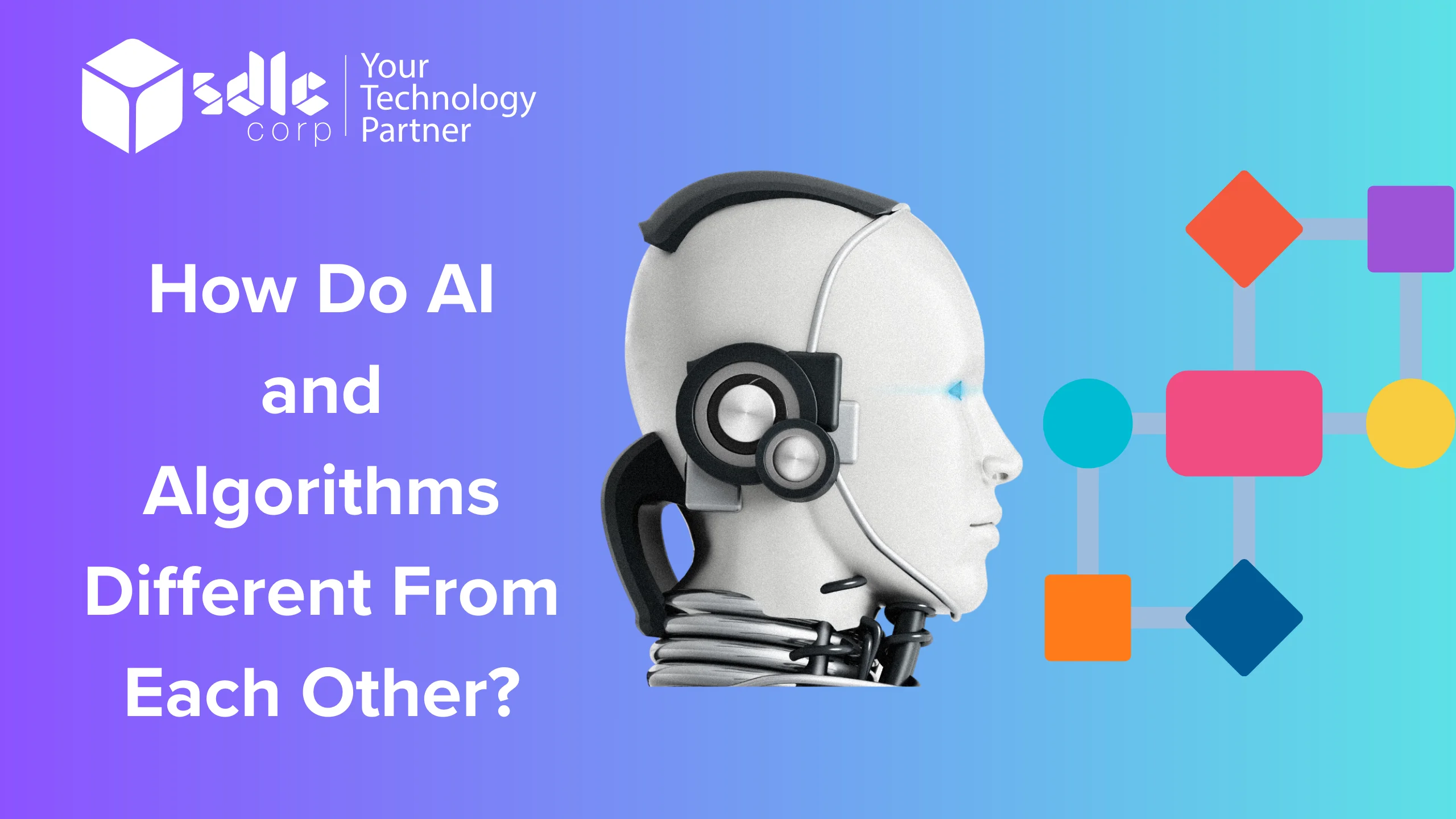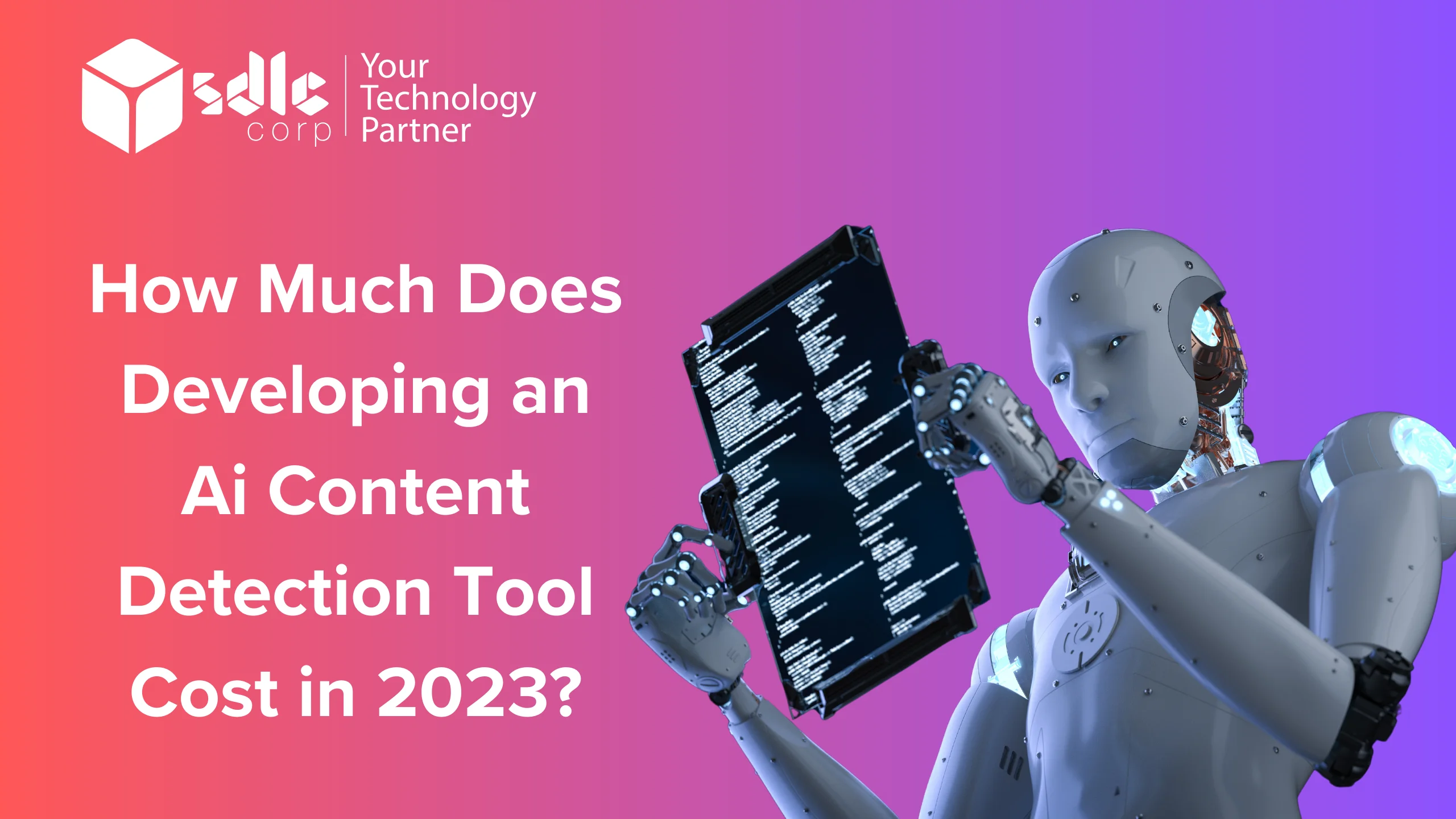How Much Developing an AI Content Detection Tool Cost in 2023?
Artificial intelligence (AI) content detection tools are becoming increasingly important in today’s digital landscape, especially with the rise of social media platforms, online marketplaces, and digital content sharing.
However, in 2023, the cost of developing an AI content detection tool depends on several factors, including the scope of the tool’s functionality, the size of the data sets used for training, and the complexity of the algorithms employed.
In response to this threat, New York City’s school administration prohibited students and educators from using ChatGPT. However, the industry’s plan for dealing with the AI-field reality is the creation of AI content identification tools.
According to Markus Anderljung and Julian Hazell of Oxford’s ‘Centre for Governance of AI,’ “with improved detection capabilities, platforms could mitigate harm by labeling AI-generated content as such or remove media that violates their terms of service.”
One method discussed in the paper is not making the model open-access. This will enable the AI model’s developers to efficiently train the model to detect the content generated by it.
Businesses such as Turnitin and Barnes & Noble Education are reacting with AI content detection solutions to bridge the gap, as the threat is severe for marketers.
And, because the market is mature, rivalry in AI content detection development is more relaxed. By developing an AI content detection tool, entrepreneurs discover a lucrative possibility to produce a secondary (or significant) revenue stream.
That is what we will discuss in this article today: the cost of developing an AI content detection tool (which can range between $50,000 and $200,000), its features, and its benefits. But first, let’s go over AI content identification technologies in depth.
How to Identify AI Content
First and foremost, an individual’s modification of AI-generated information will be virtually untraceable. Furthermore, no method is 100% accurate in recognizing AI material.
For example, an AI NLP (Natural Language Processing) chatbot is a complex algorithm trained to produce natural language output. As a result, if we know the algorithm on which the model is based, we can accurately tell whether AI generates a piece of material. The parameters that can be utilized to detect AI content are as follows.
Perplexity in NLP modeling refers to the likelihood of a word appearing in a series of talks. It assesses how well a language modal can predict the following comment in a word sequence.
For example, if we test a chatbot’s perplexity for the next word in the sequence, “the cat sat on the…”, the confusion for the moon will be more significant (because it is less likely) and lower for the floor or mat (because they are more likely).
This gives us a good notion of a modal’s confidence in guessing the next word. For example, suppose the perplexity score of a fine-tuned language model for a piece of content is lower than that of a human-trained language model. In that case, an AI language model most likely generated the article.
Explore 2024 AI Content Detection Costs Now! Get Ahead and Plan Wisely!

Burstiness
The way words are used in a specific situation is called burstiness. AI-generated content frequently has a higher burstiness level. And there’s a reason behind this. Massive volumes of data are needed to simulate an AI mode during training. As a result, words from the training dataset are overused.
Nonhuman Linguistics
NLP models frequently produce text that may appear strange to a human reader since they need to fully comprehend the breadth and depth of human communications and language. This is a qualitative rather than quantitative criterion for identifying whether or not AI generates a piece of material.
Unusual Syntactic and Semantic Patterns
Syntactic patterns use words and phrases organized according to grammar rules to create grammatically correct and meaningful sentences. Unfortunately, AI chatbots, such as ChatGPT, frequently generate language that does not strictly adhere to grammar norms. Semantic patterns, on the other hand, refer to the aggregate meaning of words in a sentence.
This comes down to correctly using phrases, idioms, and other linguistic techniques, which provide richness and variety to human discourse. AI-generated content is only sometimes consistent and coherent in its syntactic and semantic patterns, which can be utilized to identify AI-generated content.
Developing an AI Tool for Content Detection: Costs and Associated Factors
To put a number on it, creating an AI content detection technology costs between $50,000 and $200,000. This is only an estimate; your needs and other factors will determine the final price. (Read more about The Costs and Benefits of Developing an AI-Powered Smart Personal Assistant App)
Here are some of the things that affect how much it costs to make an AI recognition tool:
Tool Complexity
The more sophisticated the tool, the greater the cost. The more precise the AI content detection tool, the more difficult it will be. As a result, the accuracy of content detection will be a crucial component in deciding the cost investment.
Data Requirements
Training an NLP model necessitates a massive amount of data. As a result, training an AI content identification technology will require a similar number of data. You can lower your costs by using open-source data libraries. Access to proprietary data will increase your cost, but the model will be much cleaner and more valuable because it will be trained on the dataset of your specific use case.
Infrastructure Requirements
An AI content detection tool’s storage and computational requirements will also be a cost to consider before starting the development project. However, this will not deter your plan because cloud computing is becoming increasingly affordable.
Additional Features
You can add different functions to the program that will affect the price, like proofreading and plagiarism detection. The existing market products need more UI/UX smoothness than AI tools deserve.
Shape Tomorrow with AI! Embrace the Future!

Explore our other insights!

How Do AI and Algorithms Different From Each Other?
How Do AI and Algorithms Different From Each Other? AI and algorithms are two terms that are usually

HOW MUCH IS THE COST TO DEVELOP AN EVENT MANAGEMENT APP LIKE EVENTBRITE?
How much is the cost to Develop an Event Management App Like Eventbrite? develop an event management
The Lifecycle of an AI Content Detection Tool: From Inception to Deployment
To understand the cost of developing an AI content detection tool, we need first to understand the process of developing such a tool. Creating an AI content detection tool involves several stages, including data collection, data labeling, algorithm design, model training, model testing, and deployment.
Data Labelling
After collecting the data sets, the next step is to label them. Labelling involves tagging each data point with relevant information, such as the type of content (text, image, or video), language, sentiment, and category (hate speech, spam, nudity, etc.). Data labelling is crucial in machine learning because it enables the algorithm to recognize patterns and make accurate predictions.
Data labelling can be done manually or using automated tools. Manual data labelling is more accurate but time-consuming and expensive, while automatic labelling is faster and cheaper but less accurate. The cost of data labelling depends on the size of the data sets and the complexity of the labelling process. (Read more about Business Networking App: Cost, Features, and Factors)
Algorithm Design
The next step in developing an AI content detection tool is designing the algorithm the device will use to analyze and classify the data sets. Algorithm design involves selecting the appropriate machine learning techniques, such as supervised, unsupervised, or reinforcement learning, and designing the neural network architecture that will be used for model training.
The cost of algorithm design depends on the complexity of the tool’s intended use case and the level of expertise required to design and implement the algorithms.
Model Training
After designing the algorithms, the next step is to train the models using the labelled data sets. Model training involves feeding the labelled data sets into the algorithm and adjusting its parameters until it achieves the desired level of accuracy.
Model training is an iterative process that requires significant computing power, which can be expensive. The cost of model training depends on the size and complexity of the data sets, the number of iterations required, and the computing resources used.
Model Testing
After the models are trained, they are tested with a different data set to see how well and accurately they work. Model testing is crucial because it helps to find any mistakes or flaws in the models and fix them.
The cost of model testing depends on the size and complexity of the test data sets and the required accuracy level.
Deployment
After testing the models, the final step is to deploy the AI content detection tool. Deployment involves integrating the tool into the target platform or application and ensuring it works seamlessly with other systems.
The deployment cost depends on the integration process’s complexity and the level of support required to ensure that the tool works as intended.

Conclusion
Establishing an AI content detection tool necessitates several critical factors, including evaluating the competitive landscape, selecting an experienced development partner, and adhering to a precise procedure.
You may construct an AI content detection tool suited to your business’s demands by following the step-by-step method in this blog and working with SDLC for your development needs. Trust SDLC professionals to assist you through the process and deliver a solution specific to your content detection needs.
FAQs
1. What is an Ai Content Detection Tool?
An AI content detection tool is a software application that uses artificial intelligence algorithms to automatically detect and analyze various types of content, such as text, images, and videos, to determine if they meet specific criteria or guidelines. For example, an AI content detection tool can identify and flag inappropriate or illegal content on a website or social media platform.
2. What Are the Perks of Using an Ai Tool to Find Content?
The benefits of using an AI content detection tool include the following:
Increased Accuracy: AI content detection tools can analyze vast amounts of data much more quickly and accurately than humans, thereby improving the accuracy and efficiency of content detection.
Consistency: An AI content detection tool can apply consistent criteria for content evaluation, eliminating the possibility of human error or bias.
Scalability: An AI content detection tool can handle large volumes of content and scale up or down as needed to meet demand.
Cost-effective: In the long term, using an AI content detection tool can be more cost-effective than relying solely on human content moderation.
3. What Are Some Challenges in Developing an Ai Content Detection Tool?
Some challenges in developing an AI content detection tool include the following:
Data Quality: The quality of the data used to train the algorithm can significantly impact the accuracy and reliability of the tool.
Bias: There is a risk of algorithmic bias, leading to inaccuracies and unfair treatment of certain types of content.
Privacy Concerns: The use of AI content detection tools can raise privacy concerns, particularly in cases where personal data is involved.
Technical Limitations: The complexity of the algorithms and the hardware required to run them can present technical challenges in the development and deployment of the tool.















